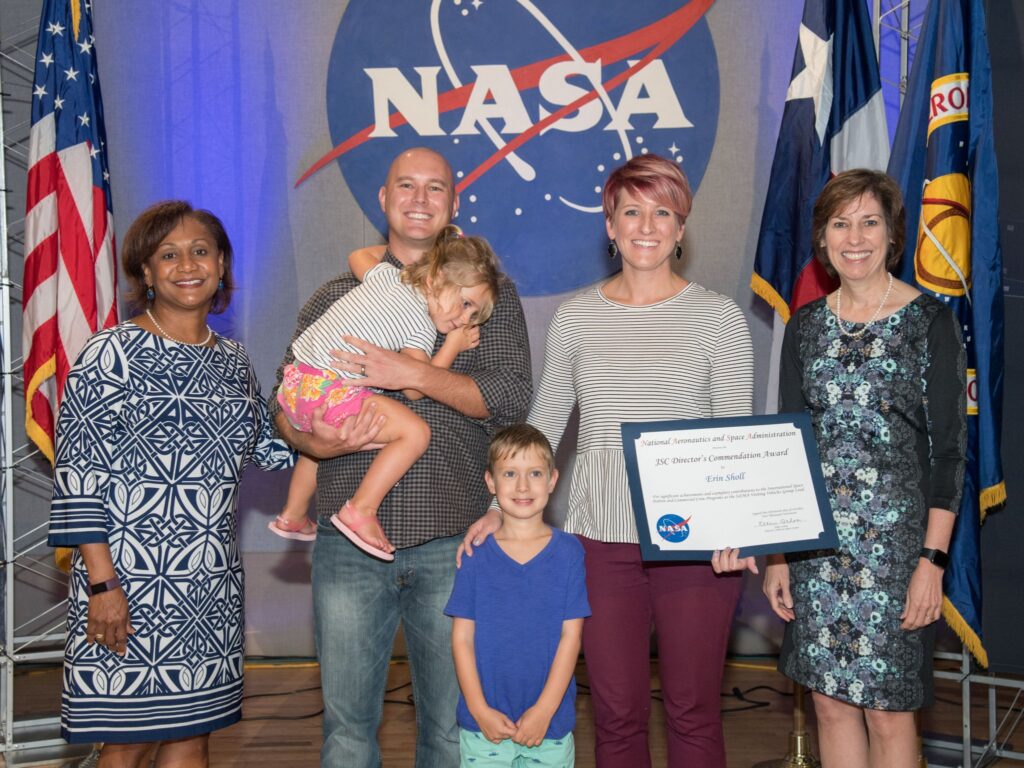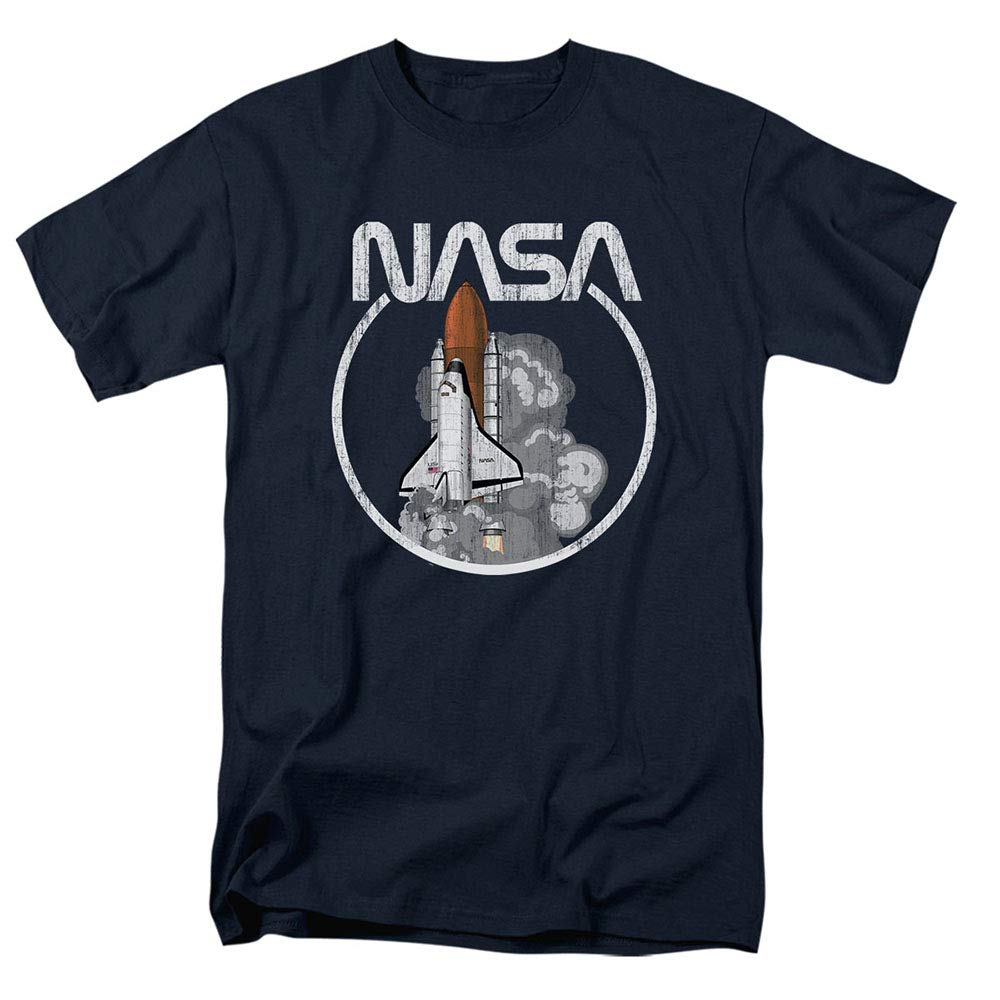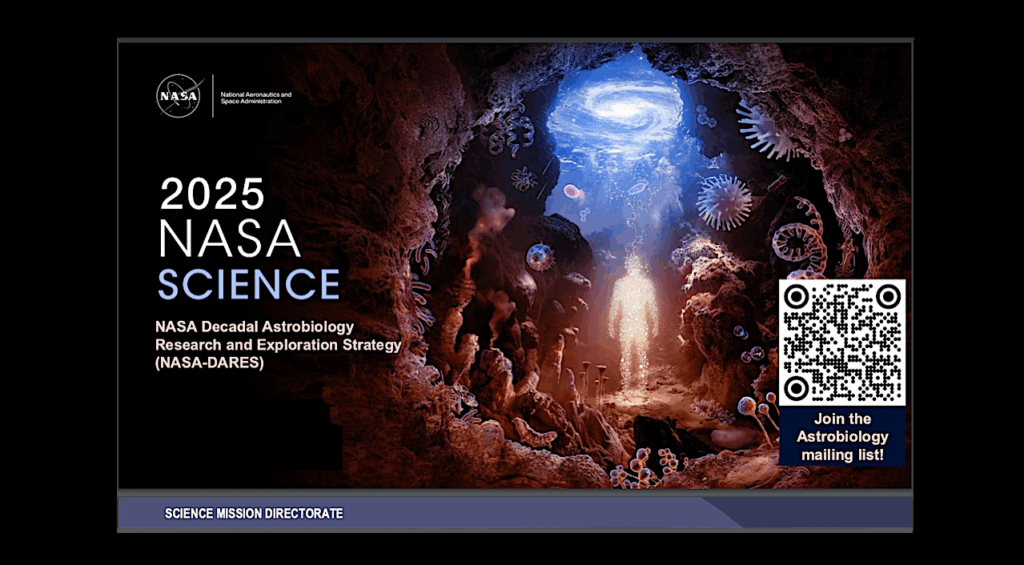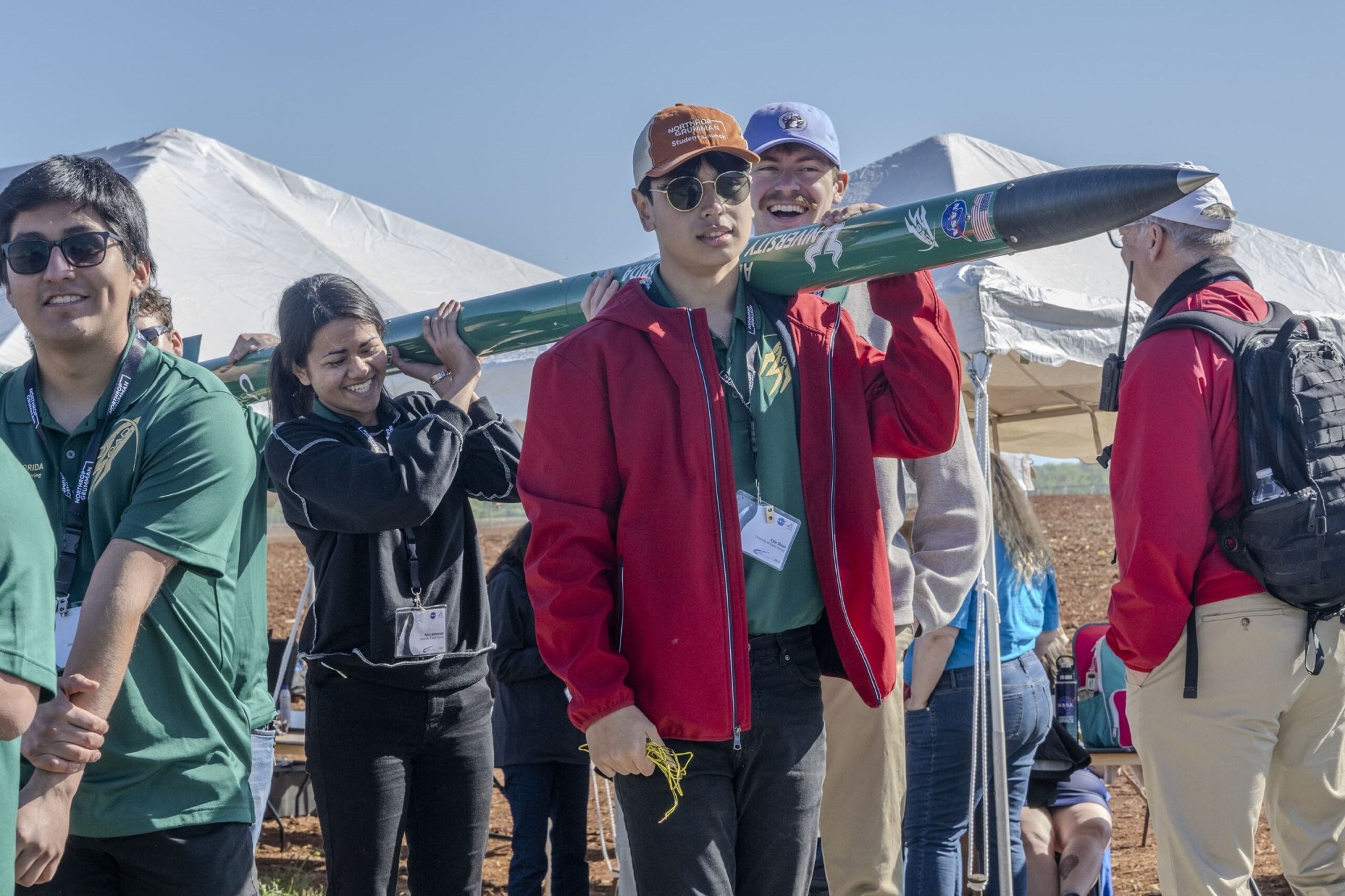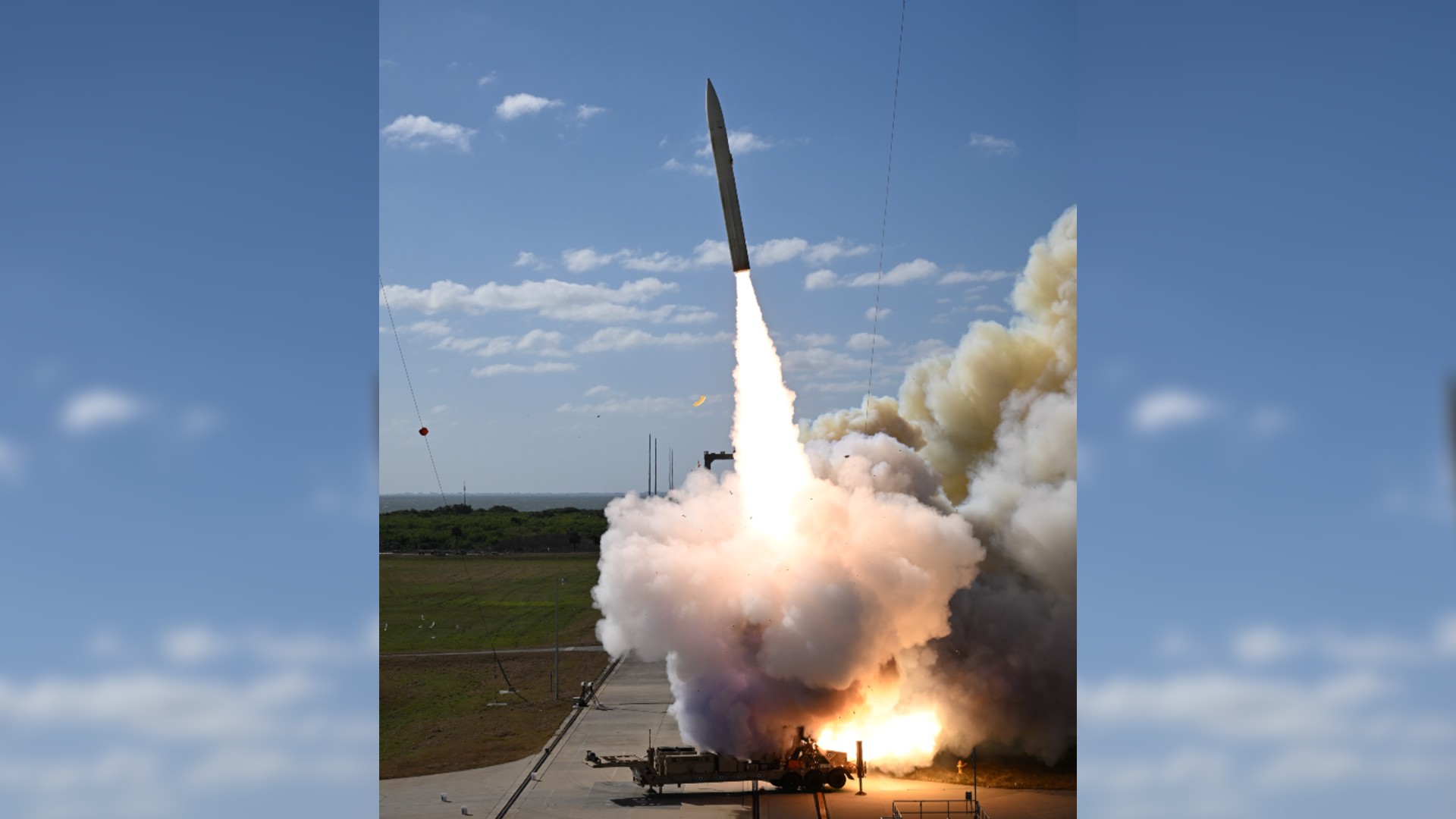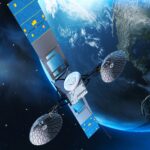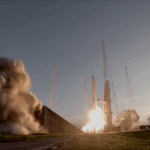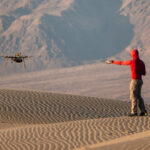Now Reading: NASA Soars to New Heights in First 100 Days of Trump Administration
-
01
NASA Soars to New Heights in First 100 Days of Trump Administration
NASA Soars to New Heights in First 100 Days of Trump Administration
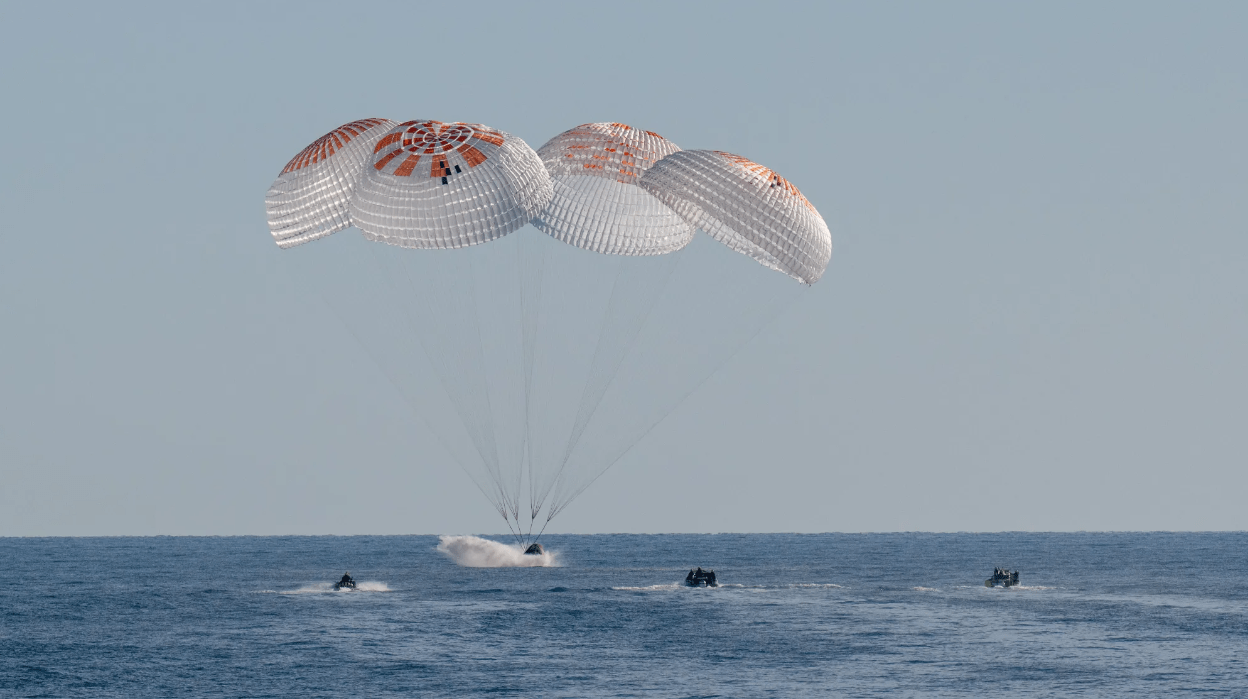
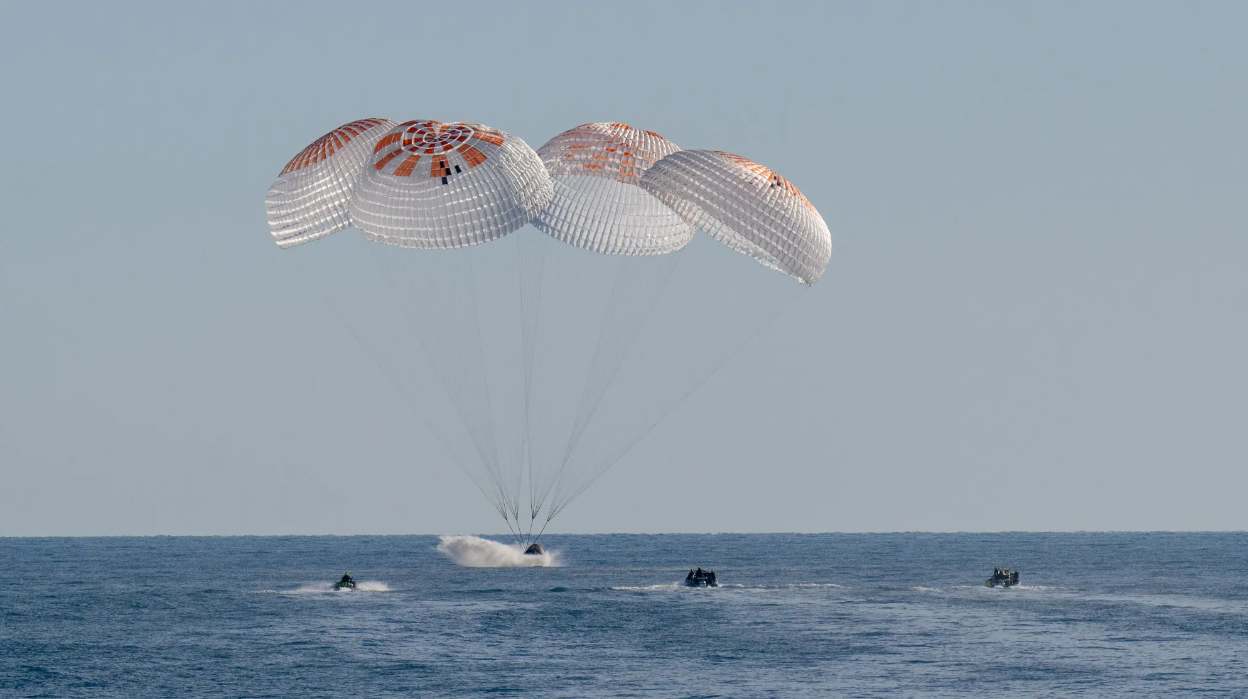
Today is the 100th day of the Trump-Vance Administration after being inaugurated on Jan. 20. In his inaugural address, President Trump laid out a bold and ambitious vision for NASA’s future throughout his second term, saying, “We will pursue our manifest destiny into the stars, launching American astronauts to plant the Stars and Stripes on the planet Mars.” NASA has spent the first 100 days in relentless pursuit of this goal, continually exploring, innovating, and inspiring for the benefit of humanity.
“In just 100 days, under the bold leadership of President Trump and acting Administrator Janet Petro, NASA has continued to further American innovation in space,” said Bethany Stevens, NASA press secretary. “From expediting the return of American astronauts home after an extended stay aboard the state-of-the-art International Space Station, to bringing two new nations on as signatories of the Artemis Accords, to the historic SPHEREx mission launch that takes us one step closer to mapping the secrets of the universe, NASA continues to lead on the world stage. Here at NASA, we’re putting the America First agenda into play amongst the stars, ensuring the United States wins the space race at this critical juncture in time.”
A litany of victories in the first 100 days set the stage for groundbreaking success throughout the remainder of the term. Read more about NASA’s cutting-edge work in this short, yet dynamic, period of time below:
Bringing Astronauts Home Safely, Space Station Milestones
- America brought Crew-9 safely home. NASA astronauts Butch Wilmore, Suni Williams, and Nick Hague, along with Roscosmos cosmonaut Aleksandr Gorbunov, returned to Earth after a successful mission aboard the International Space Station, splashing down in the Gulf of America. Their safe return reflects America’s unwavering commitment to the agency’s astronauts and mission success.
- A new, American-led mission launched to space. The agency’s Crew-10 mission is currently aboard the space station, with NASA astronauts Anne McClain and Nichole Ayers, joined by international partners from Japan and Russia. NASA continues to demonstrate American leadership and the power of space diplomacy as we maintain a continuous human presence in orbit.
- The agency welcomed home NASA astronaut Don Pettit, concluding a seven-month science mission aboard the orbiting laboratory. Pettit landed at 6:20 a.m. Kazakhstan time, April 20 on his 70th birthday, making him NASA’s oldest active astronaut and the third oldest person to reach orbit.
- NASA astronaut Jonny Kim launched and arrived safely at the International Space Station, marking the start of his first space mission. Over eight months, he’ll lead groundbreaking research that advances science and improves life on Earth, proving once again that Americans are built to lead in space.
- The four members of the agency’s SpaceX Crew-11, NASA astronauts Zena Cardman and Mike Fincke, JAXA (Japan Aerospace Exploration Agency) astronaut Kimiya Yui, and Roscosmos cosmonaut Oleg Platonov were named by NASA. Launching no earlier than July 2025, this mission continues America’s leadership in long-duration human spaceflight while strengthening critical global partnerships.
- NASA announced Chris Williams will launch in November 2025 for his first spaceflight. His upcoming mission underscores the pipeline of American talent ready to explore space and expand our presence beyond Earth.
- NASA is inviting U.S. industry to propose two new private astronaut missions to the space station in 2026 and 2027 – building toward a future where American companies sustain a continuous human presence in space and advance our national space economy.
- NASA and SpaceX launched the 32nd Commercial Resupply Services mission, delivering 6,700 pounds of cargo to the International Space Station. These investments in science and technology continue to strengthen America’s leadership in low Earth orbit. The payload supports cutting-edge research, including:
- New maneuvers for free-flying robots
- An advanced air quality monitoring system
- Two atomic clocks to explore relativity and ultra-precise timekeeping
Sending Humans to Moon, Mars
- Teams began hot fire testing the first of three 12-kW Solar Electric Propulsion (SEP) thrusters. These high-efficiency thrusters are a cornerstone of next-generation spaceflight, as they offer greater fuel economy and mission flexibility than traditional chemical propulsion, making them an asset for long-duration missions to the Moon, Mars, and beyond. For Mars in particular, SEP enables three key elements required for success:
- Sustained cargo transport
- Orbital maneuvering
- Transit operations
- NASA completed the fourth Entry Descent and Landing technology test in three months, accelerating innovation to achieve precision landings on Mars’ thin atmosphere and rugged terrain.
- NASA’s Deep Space Optical Communications experiment aboard Psyche broke new ground, enabling the high-bandwidth connections vital for communications with crewed missions to Mars.
- Firefly Aerospace’s Blue Ghost Mission One successfully delivered 10 NASA payloads to the Moon, advancing landing, autonomy, and data collection skills for Mars missions.
- Intuitive Machines’ IM-2 mission achieved the southernmost lunar landing, collecting critical data from challenging terrain to inform Mars exploration strategies.
- NASA cameras aboard Firefly’s Blue Ghost lander captured unprecedented footage of engine plume-surface interactions, offering vital data for designing safer landings on the Moon and Mars.
- The agency’s Stereo Cameras for Lunar Plume-Surface Studies (SCALPSS) 1.1 aboard Blue Ghost collected more than 9,000 images of lunar descent, providing insights on lander impacts and terrain interaction to guide future spacecraft design.
- New SCALPSS hardware delivered for Blue Origin’s Blue Mark 1 mission also is enhancing lunar landing models, helping build precision landing systems for the Moon and Mars. The LuGRE (Lunar Global Navigation Satellite System Receiver Experiment) on Blue Ghost acquired Earth navigation signals from the Moon, advancing autonomous positioning systems crucial for lunar and Mars operations.
- The Electrodynamic Dust Shield successfully cleared lunar dust, demonstrating a critical technology for protecting equipment on the Moon and Mars.
- Astronauts aboard the space station conducted studies to advance understanding of how to keep crews healthy on long-duration Mars missions.
- NASA’s Moon to Mars Architecture Workshop gathered industry, academic, and international partners to refine exploration plans and identify collaboration opportunities.
Artemis Milestones
- NASA completed stacking the twin solid rocket boosters for Artemis II, the mission that will send American astronauts around the Moon for the first time in more than 50 years. This is a powerful step toward returning our nation to deep space.
- At NASA’s Kennedy Space Center in Florida, teams joined the core stage with the solid rocket boosters inside the Vehicle Assembly Building.
- Engineers lifted the launch vehicle stage adapter atop the SLS (Space Launch System) core stage, connecting key systems that will soon power NASA’s return to the Moon.
- Teams received the Interim Cryogenic Propulsion Stage and moved the SLS core stage into the transfer aisle, clearing another milestone as the agency prepares to fully integrate America’s most powerful rocket.
- NASA attached the solar array wings that will help power the Orion spacecraft on its journey around the Moon, laying the groundwork for humanity’s next giant leap.
- Technicians installed the protective fairings on Orion’s service module to shield the spacecraft during its intense launch and ascent phase, as NASA prepares to send astronauts farther than any have gone in more than half a century.
- The agency’s next-generation mobile launcher continues to take shape, with the sixth of 10 massive modules being installed. This structure will carry future Artemis rockets to the launch pad.
- NASA and the Department of Defense teamed up aboard the USS Somerset for Artemis II recovery training, ensuring the agency and its partners are ready to safely retrieve Artemis astronauts after their historic mission around the Moon.
- NASA unveiled the Artemis II mission patch. The patch designates the mission as “AII,” signifying not only the second major flight of the Artemis campaign but also an endeavor of discovery that seeks to explore for all and by all.
America First in Space
- NASA announced the first major science results from asteroid Bennu, revealing ingredients essential for life, a discovery made possible by U.S. leadership in planetary science through the OSIRIS-REx (Origins, Spectral Interpretation, Resource Identification, and Security-Regolith Explorer) mission. The team found salty brines, 14 of the 20 amino acids used to make proteins, and all five DNA nucleobases, suggesting that the conditions and ingredients for life were widespread in our early solar system. And this is just the beginning – these results were from analysis of only 0.06% of the sample.
- NASA was named one of TIME’s Best Companies for Future Leaders, underscoring the agency’s role in cultivating the next generation of American innovators.
- NASA awarded contracts to U.S. industry supporting Earth science missions, furthering our understanding of the planet while strengthening America’s industrial base.
- As part of the Air Traffic Management-Exploration project, NASA supported Boeing’s test of digital and autonomous taxiing with a Cessna Caravan at Moffett Federal Airfield. The test used real-time simulations from the agency’s Future Flight Central to gather data that will help Boeing refine its systems and safely integrate advanced technologies into national airspace, demonstrating American aviation leadership.
- NASA successfully completed its automated space traffic coordination objectives between the agency’s four Starling spacecraft and SpaceX’s Starlink constellation. Teams demonstrated four risk mitigation maneuvers, autonomously resolving close approaches between two spacecraft with different owner/operators.
- In collaboration with the National Institute of Aeronautics, NASA selected eight finalists in a university competition aimed at designing innovative aviation solutions that can help the agriculture industry. NASA’s Gateways to Blue Skies seeks ways to apply American aircraft and aviation technology to enhance the productivity, efficiency, and resiliency of American farms.
- In Houston, United Airlines pilots successfully conducted operational tests of NASA-developed technologies designed to reduce flight delays. Using technologies from the Air Traffic Management Exploration project, pilots flew efficient re-routes, avoiding airspace with bad weather upon departure. United plans to expand the use of these capabilities, another example of how NASA innovations benefit all humanity.
- On March 11, NASA’s newest astrophysics observatory, SPHEREx, launched on its journey to answer fundamental questions about our universe, thanks to the dedication and expertise of the agency’s team. Riding aboard a SpaceX Falcon 9 from Vandenberg Space Force Base, SPHEREx will scan the entire sky to study how galaxies formed, search for the building blocks of life, and look back to the universe’s earliest moments. After launch, SPHEREx turned on its detectors, and everything is performing as expected.
- Also onboard were four small satellites for NASA’s PUNCH (Polarimeter to Unify the Corona and Heliosphere) mission, which will help scientists understand how the Sun’s outer atmosphere becomes solar wind. These missions reflect the best of the agency – pushing the boundaries of discovery and expanding our understanding of the cosmos.
- On March 14, NASA’s EZIE (Electrojet Zeeman Imaging Explorer) mission launched from Vandenberg Space Force Base. This trio of small satellites will study auroral electrojets, or intense electric currents flowing high above Earth’s poles, helping the agency better understand space weather and its effects on our planet. The mission has taken its first measurements, demonstrating that the spacecraft and onboard instrument are working as expected.
- The X-59 quiet supersonic aircraft cleared another hurdle on its way to first flight. The team successfully completed an engine speed hold test, confirming the “cruise control” system functions as designed.
- NASA researchers successfully tested a prototype that could help responders fight and monitor wildfires, even in low-visibility conditions. The Portable Airspace Management System, developed by NASA’s Advanced Capabilities for Emergency Response Operations project, safely coordinated simulated operations involving drones and other aircraft, tackling a major challenge for those on the front lines. This is just one example of how NASA’s innovation is making a difference where it’s needed most.
- NASA’s Parker Solar Probe completed its 23rd close approach to the Sun, coming within 3.8 million miles of the solar surface while traveling at 430,000 miles per hour – matching its own records for distance and speed. That same day, Parker Solar Probe was awarded the prestigious Collier Trophy, a well-earned recognition for its groundbreaking contributions to heliophysics.
- In response to severe weather that impacted more than 10 states earlier this month, the NASA Disasters Response Coordination System activated to support national partners. NASA worked closely with the National Weather Service and the Federal Emergency Management Agency serving the central and southeastern U.S. to provide satellite data and expertise that help communities better prepare, respond, and recover.
- As an example of how NASA’s research today is shaping the transportation of tomorrow, the agency’s aeronautics engineers began a flight test campaign focused on safely integrating air taxis into the national airspace. Using a Joby Aviation demonstrator aircraft, engineers are helping standardize flight test maneuvers, improving tools to assist with collision avoidance and landing operations, and ensuring safe and efficient air taxis operations in various weather conditions.
- NASA premiered “Planetary Defenders,” a new documentary that follows the dedicated team behind asteroid detection and planetary defense. The film debuted at an event at the agency’s headquarters with digital creators, interagency and international partners, and now is streaming on NASA+, YouTube, and X. In its first 24 hours, it saw 25,000 views on YouTube – 75% above average – and reached 4 million impressions on X.
- Finland became the 53rd nation to sign the Artemis Accords, reaffirming its commitment to the peaceful, transparent, and responsible exploration of space. This milestone underscores the growing global coalition led by the United States to establish a sustainable and cooperative presence beyond Earth.
- In Dhaka, Bangladesh, NASA welcomed a new signatory to the Artemis Accords. Bangladesh became the 54th nation to commit to the peaceful, safe, and responsible exploration of space. It’s a milestone that reflects our shared values and growing global momentum, reaffirming the United States’ leadership in building a global coalition for peaceful space exploration.
- At NASA’s Armstrong Flight Research Center in Edwards, California, engineers conducted calibration flights for a new shock-sensing probe that will support future flight tests of the X-59 quiet supersonic demonstrator. Mounted on a research F-15D that will follow the X-59 closely in flight, the probe will gather data on the shock waves the X-59 generates, providing important data about its ability to fly faster than sound, but produce only a quiet thump.
- In its second asteroid encounter, Lucy flew by the asteroid Donaldjohanson and gave NASA a close look at a uniquely shaped fragment dating back 150 million years – an impressive performance ahead of its main mission target in 2027.
- A celebration of decades of discovery, NASA’s Hubble Space Telescope celebrated its 35th anniversary with new observations ranging from nearby solar system objects to distant galaxies – proof that Hubble continues to inspire wonder and advance our understanding of the universe.
- The SPHEREx team rang the closing bell at the New York Stock Exchange, spotlighting NASA’s newest space telescope and its bold mission to explore the origins of the universe.
- NASA received six Webby Awards and six People’s Voice Awards across platforms – recognition of America’s excellence in digital engagement and public communication.
- The NASA Electric Aircraft Testbed and Advanced Air Transport Technology project concluded testing of a 2.5-megawatt Wright Electric motor designed to eventually serve large aircraft. The testing used the project’s capabilities to simulate altitude conditions of up to 40,000 feet while the electric motor, the most powerful tested so far at the facility, ran at both full voltage and partial power. NASA partnered with the Department of Energy on the tests.
- U.S. entities can now request the Glenn Icing Computational Environment (GlennICE) tool from the NASA Software Catalog and discover solutions to icing challenges for novel engine and aircraft designs. A 3D computational tool, GlennICE allows engineers to integrate icing-related considerations earlier in the aircraft design process and enable safer, more efficient designs while saving costs in the design process.
For more about NASA’s mission, visit:
-end-
Bethany Stevens
Headquarters, Washington
202-358-1600
bethany.c.stevens@nasa.gov
Stay Informed With the Latest & Most Important News
Previous Post
Next Post
-
 012024 in Review: Highlights from NASA in Silicon Valley
012024 in Review: Highlights from NASA in Silicon Valley -
 02Panasonic Leica Summilux DG 15mm f/1.7 ASPH review
02Panasonic Leica Summilux DG 15mm f/1.7 ASPH review -
 03From Polymerization-Enabled Folding and Assembly to Chemical Evolution: Key Processes for Emergence of Functional Polymers in the Origin of Life
03From Polymerization-Enabled Folding and Assembly to Chemical Evolution: Key Processes for Emergence of Functional Polymers in the Origin of Life -
 04How New NASA, India Earth Satellite NISAR Will See Earth
04How New NASA, India Earth Satellite NISAR Will See Earth -
 05And Thus Begins A New Year For Life On Earth
05And Thus Begins A New Year For Life On Earth -
 06Astronomy Activation Ambassadors: A New Era
06Astronomy Activation Ambassadors: A New Era -
07SpaceX launch surge helps set new global launch record in 2024












